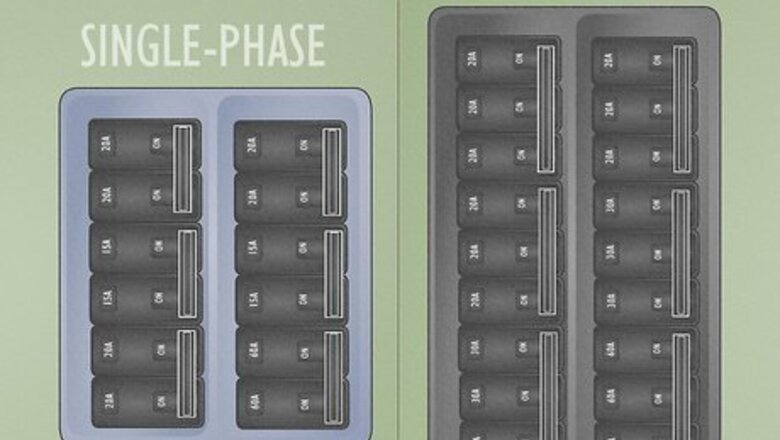
views
- Open your fuse box and find the main switch, which is often labeled. If there are 3 switches, it’s a 3-phase circuit. If there are 1 or 2, it’s a single-phase circuit.
- Check your electrical meter for a label. It might say “Mono-Phase,” or 1-Phase” if it’s single phase, or “Tri-Phase” or “Polyphase” if it’s 3-phase.
- Check your electrical bill or call your electrical company to figure out what kind of supply you have.
Checking Your Switchboard or Electrical Meter
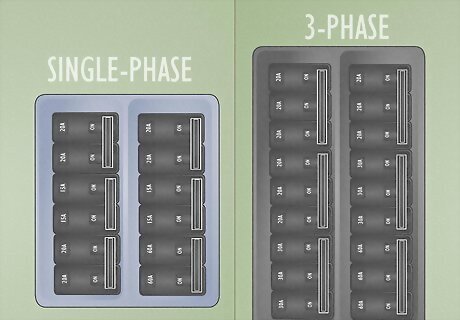
Check your circuit breaker’s main switch for 1 or 3 poles. Find your fuse box and locate the main switch. They’re often labeled and in the middle or top of the box. If the main switch is 3 “poles” (switches) long, you have 3-phase power. If it’s 1 or 2 poles, it’s single-phase. If you don’t know where your fuse box is, check for a metal door flush to the wall in your garage, basement, or on the side of your house.Tip: Your utility bill may also say what type of power you have. Check out a recent bill to see if it says single or 3-phase on it. Single-phase power supply is mostly used for residential homes, while 3-phase power is used for places with large electrical loads, like hospitals, factories, and apartment complexes.
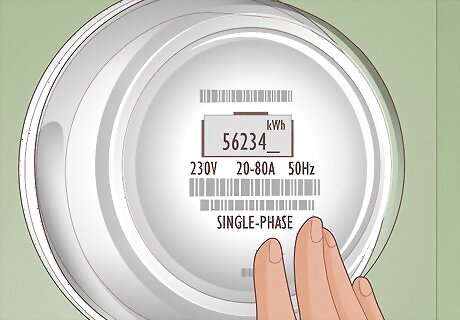
Read your electrical meter to see if it says single or 3-phase. Check by your fuse box or outside of your house for the electrical meter. Single-phased meters are sometimes labeled “Single-Phase,” “Mono-Phase,” or “1-Phase” and 3-phase supplies sometimes say “3-Phase,” “Tri-Phase,” or “Polyphase.”
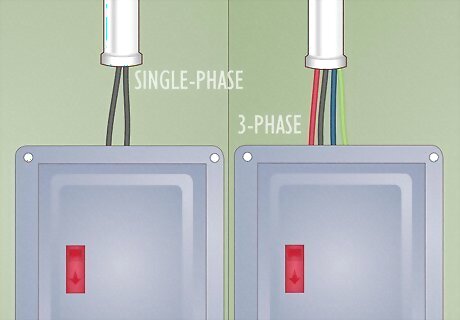
Check the main switch for 2 wires (single-phase) or 3-4 wires (3-phase). Count how many wires are leading into the main switch’s top terminal. Single-phase switches have 1 hot wire and 1 neutral wire, while 3-phase has 3 hot wires and 1 neutral wire. The wires may be insulated in such a way that you can’t see them. If so, check for exposed wires leading into an appliance, like your water heater. 2 wires mean a single-phase, and 4 mean it’s 3-phase.
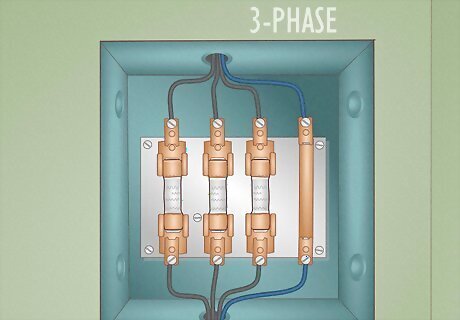
Count 3 fuses for 3-phase or 1 fuse for single-phase power supplies. If you have fuses, go to the fuse box and check how many are in the main block. The block may look like a box with a metal handle, or the fuses may look like chunky black rectangles. Single-phase circuits use 1 service fuse and 3-phase circuits use 3 service fuses. Fuse boxes are basically the same as breaker boxes—they’re still just metal cabinets flush to the wall. If your house was built before the 1960s (and never had an electrical update) it probably has fuses.
Checking the Voltage
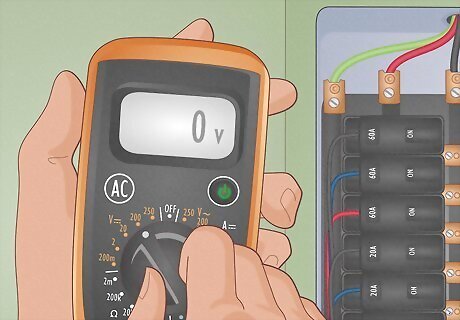
Set a digital multimeter to the AC volts setting. Use a digital multimeter with 2 leads to check the voltage of your electrical system. Turn on your multimeter and set the setting to read AC power in volts. Make sure the red and black leads are plugged in correctly. The black lead goes into the terminal labeled “COM” and the red lead goes into the terminal labeled “V.” Keep the black lead pressed against the connector. Working with electricity is dangerous, so wear electrical work gloves, pay close attention to what you touch, and ground yourself beforehand by touching an unpainted piece of metal that goes into the ground (like a pipe).
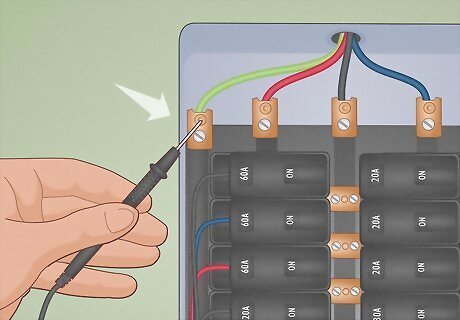
Hold your black lead to the ground wire connector. Locate the wire connectors attached to your main power switch. The connector on the far left is the neutral or ground connector. Hold the end of your black test lead against the connector. A wire connector is a small plate with a screw that holds a wire on your switchboard in place and is useful for taking readings. In a 3-phase system, the hot wires are often red, blue, and black, and the ground wire is often green.
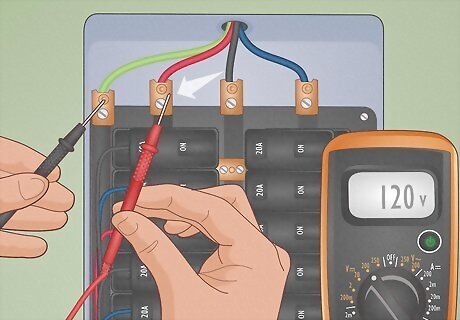
Touch the red wire to 1 of the hot wire connectors to take a reading. Take your red test lead and hold it against 1 of the hot wire connectors near the ground wire connector. Your digital multimeter should give you a reading of 120 volts. Both single and 3-phase circuits have a reading of 120 volts between a hot and ground wire.Tip: If you don’t have an accurate reading or any reading at all, your black lead may not be connected to the ground. Lift the black lead and press it against the connector again.
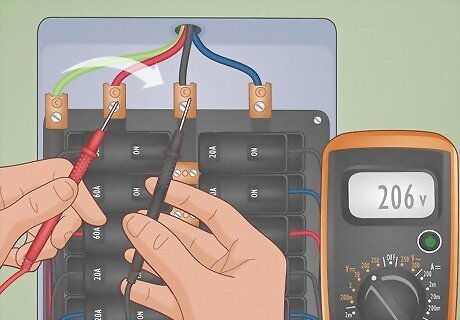
Touch the black lead to another hot wire to determine the phase. Take the black lead off of the ground connector and touch it to another hot wire connector, so each lead touches a separate connector. If you have 3-phase, the multimeter should read 206V. If it’s single-phase, it should say 240V. It may seem strange that single-phase has a higher reading than 3-phase, but it’s just because the multimeter is reading the difference in voltage between the wires, not the actual voltage of a wire itself. Since the 3-phase system is 120º out of alignment,
What’s the difference between single and 3-phase electricity?
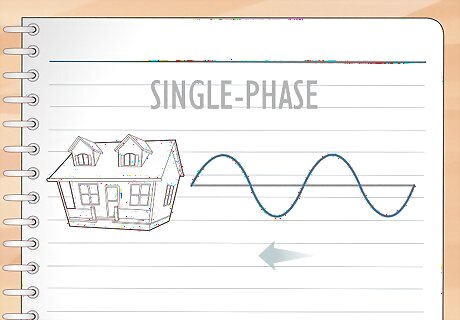
Single-phase electricity is a single waveform. In single-phase electrical systems, electricity comes into your house through one “hot,” or active wire. Think of the energy in that wire as a sine wave—so in one 360º “period”, the power peaks twice, once at the top of the wave, once at the bottom. Since it peaks and dips, the power supply sometimes hits 0.
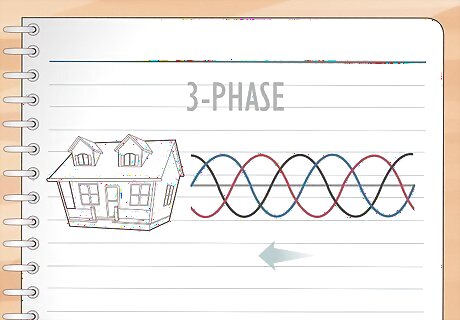
3-phase systems have three, unsynced currents. In a 3-phase system, three hot wires deliver three different currents. You can think of these as sine waves, too, but this time they’re 120º out of alignment with each other. This means that the waves overlap in such a way that the power never drops to zero, and the energy peaks 6 times, instead of two. This is why 3-phase systems are used for heavy machinery, while single-phase systems are mainly used for households. The single-phase system can’t deliver the sustained electricity needed to keep things running.




















Comments
0 comment